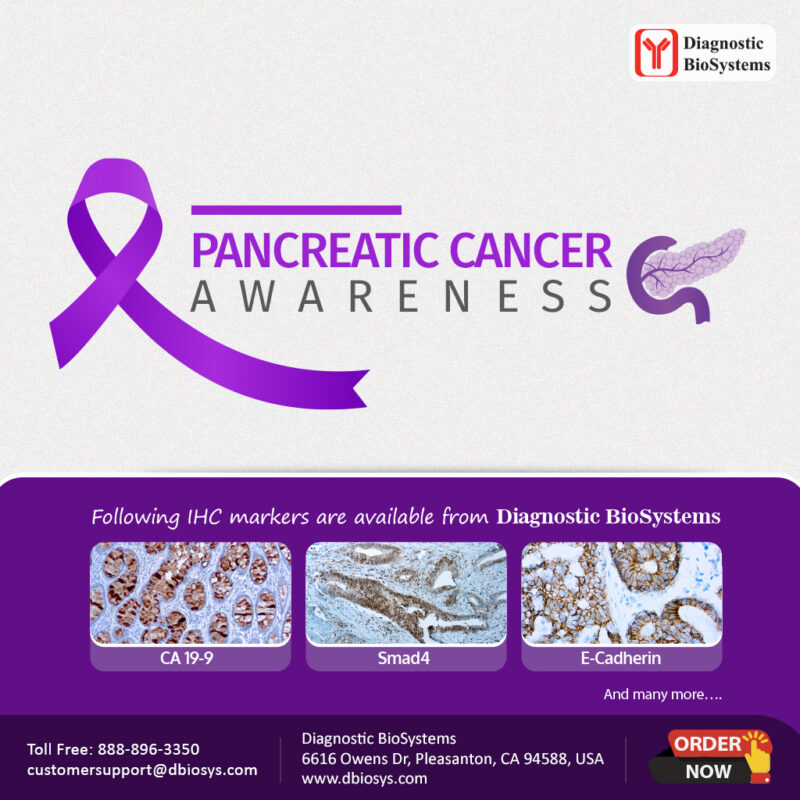CANCER AWARENESS
Pancreatic Cancer Awareness
Pancreatic cancer is a silent threat that affects thousands each year. Let’s shine a light on this disease and work towards early detection and better treatments.
Did you know?
- Pancreatic cancer has one of the lowest survival rates among major cancers.
- Early detection is challenging, making awareness crucial.
In pancreatic cancer detection, several immunohistochemistry (IHC) markers are commonly used to assist in diagnosis, classification, and treatment planning. Here are some key IHC markers associated with pancreatic cancer:
CA19-9 (Carbohydrate Antigen 19-9): CA19-9 is a glycoprotein that is often elevated in the blood of individuals with pancreatic cancer. While it is more commonly used as a serum marker, IHC staining for CA19-9 can also be performed on tissue samples.
CEA (Carcinoembryonic Antigen): CEA is a protein that may be elevated in pancreatic cancer. IHC staining for CEA can be used to detect its expression in tumor cells.
SMAD4 (Mothers Against Decapentaplegic Homolog 4): Loss of SMAD4 expression is associated with a poor prognosis in pancreatic cancer. IHC staining for SMAD4 can be used to assess its status in tumor cells.
Ki-67: Ki-67 is a marker of cell proliferation. High levels of Ki-67 expression may indicate a more aggressive tumor. IHC staining for Ki-67 helps in assessing the growth fraction of cancer cells.
p53: Mutations in the TP53 gene, which encodes the p53 protein, are common in pancreatic cancer. IHC staining for p53 can help identify alterations in this tumor suppressor gene.
CDX2 (Caudal Type Homeobox 2): CDX2 is a marker that can help differentiate between pancreatic ductal adenocarcinoma and other gastrointestinal tumors. Positive staining for CDX2 may suggest a colorectal origin.
HER2 (Human Epidermal Growth Factor Receptor 2): HER2 overexpression or amplification is observed in a subset of pancreatic cancers. IHC staining for HER2 is used to identify patients who may benefit from targeted therapies.
E-cadherin: E-cadherin is a cell adhesion molecule, and loss of its expression can be associated with a more invasive phenotype. IHC staining for E-cadherin can be used to assess the integrity of cell-cell adhesion.




